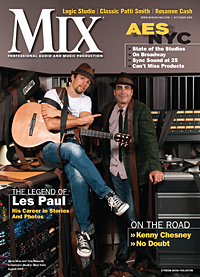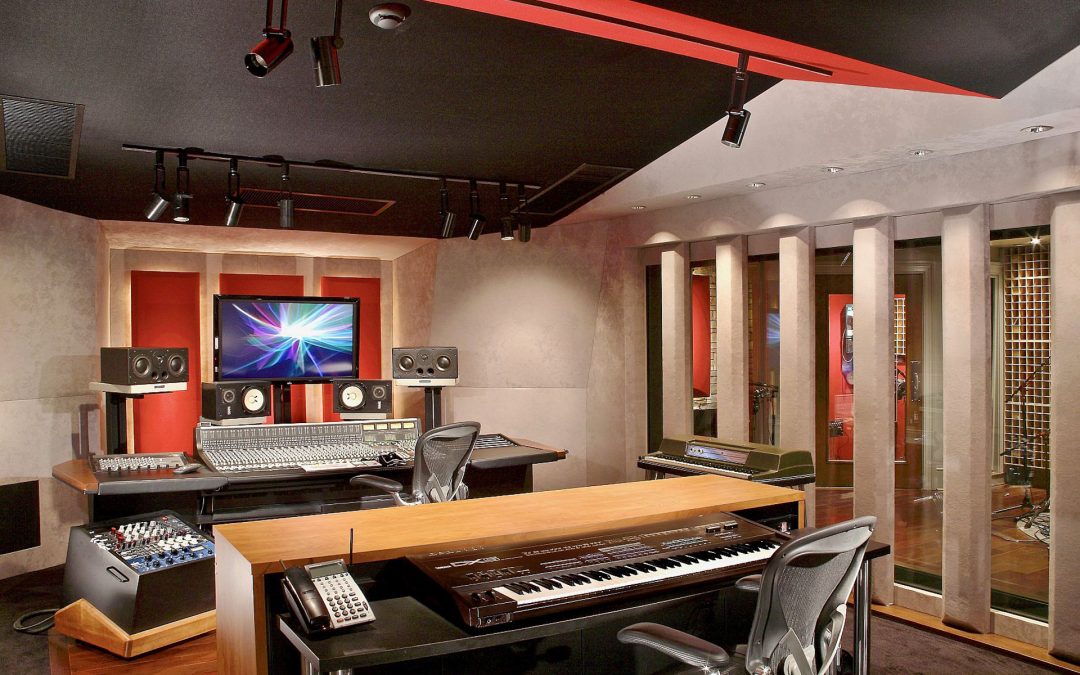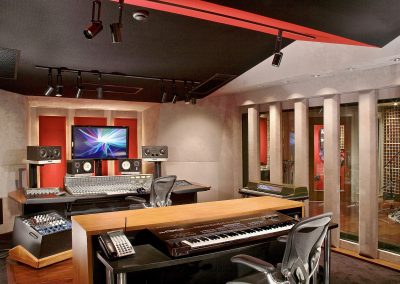By Peter Cooper
Mix Magazine, October 2009
 Carl Tatz’s parents used to leave him in the house sometimes when they left for an evening out. That’s when the speakers would get shifted around.
Carl Tatz’s parents used to leave him in the house sometimes when they left for an evening out. That’s when the speakers would get shifted around.
“My father had a component stereo,” says Tatz, the designer of the PhantomFocus system of optimizing monitor systems. “If my parents went out, my friends would come over and we’d put one speaker on the piano, another on the piano bench and we’d listen to Led Zeppelin. Loud.”
Led Zeppelin’s music has been blamed for all sorts of societal ills, as people have claimed that exposure to Plant, Page, Bonham and Jones led to vagrancy, loose morals, hearing loss and other things. In Tatz’s case, it led to an adult life spent analyzing, processing, measuring and figuring, all in the service of sound. He talks of apexes, equilateral triangles, proprietary angles and such. Tatz is an exacting, some might say obsessive, fellow.
“The angle I use is a modified 30 degrees, and it’s 67-and-a-half inches from tweeter to tweeter,” he says, sitting at the SSL AWS 900 Plus desk at The Grip II, a decidedly upscale home studio he designed for Jay DeMarcus of superstar country band Rascal Flatts. “Every single PhantomFocus system I design is 67-and-a-half inches between tweeters and 67-and-a-half inches back to the listener.”
Asked what would happen if the distances were, say, 68 inches or 66 inches, Tatz said, “It wouldn’t be the end of the world, but I like the consistency.” Tatz moved to Nashville with thoughts of becoming a recording artist, but that notion fell away and he became — well, a different kind of recording artist: one who sees recording as an art. He earned a Grammy nomination for producing a jazz album for Jack Jones, but production wasn’t an enduring passion.
Tatz was mostly interested in attaining the kind of sound that drew emotional responses from the listener. He owned a commercial studio called Recording Arts for 18 years, and just about every big-time act in Music City worked there at some point. Six years ago, he sold that studio to Sheryl Crow and began designing studios and monitoring systems.
“I can go into the worst room in the world and give somebody world-class monitoring in that one sweet spot. You sit in that spot, and the sound is jaw-dropping and accurate.”
The “accurate” part, of course, is as important as the “jaw-dropping” deal. A system that masks or obscures problems is of no use to a mix engineer. Sit in Tatz’s “sweet spot” and listen to James Taylor’s “Line ‘Em Up” through Dynaudio M1s (Tatz doesn’t design the speakers, he optimizes them), and the emotional impact of the music is sublime. Throughout the room, the sounds are clear and the audio information is useful, but in “67-and-a-Half-Inch Land,” the sound seems to float in a cloud. It feels like a second shot of after-work whiskey. The frequency response is smooth enough that listening at high volume isn’t taxing.
“You really need to turn it up loud if you want to hear the nuances,” Tatz says. “If you want to get the thrill, you need to crank it.”
To set up the monitoring systems, Tatz comes in with an analyzer and a processor and tunes the speakers. He feeds pink noise into the speakers and fiddles with crossovers and concentrates on getting the near-fields and the subwoofers in phase.
“You don’t have to use pink noise,” he says. “I could also do it with a CD, but I’d get tired of listening to the same record all the time. The pink noise soothes me, for some reason.”
Tatz’s work at The Grip II involved much more than the PhantomFocus system. He designed all aspects of the facility, including a drum room with “space couplers” that help make a room with a 9-foot ceiling sound massive enough for arena-ready music. “The sound goes up, gets confused and then comes back down,” Tatz says. “The microphones think it’s a bigger room than it is.”
Then there’s an amp closet with spring-loaded walls that float on dense foam, an iso booth with a pay phone in it and doors that open via push-plates made from Vox bass pedals. If the Devil is in the details, Tatz has likely shaken the red man’s hand. Rascal Flatts, Jessica Andrews and numerous others work at The Grip II, and in August the studio was used to record Christian trio Austins Bridge.
“I like building studios,” says Tatz, whose creations may be seen online at www.carltatzdesign.com, “but I’m most interested in the speaker thing. Everything is a vessel for my PhantomFocus. That’s what distinguishes me from any other studio designer, and I’m batting a thousand with it.”
To reach Peter Cooper, e-mail peter@petercoopermusic.com.


